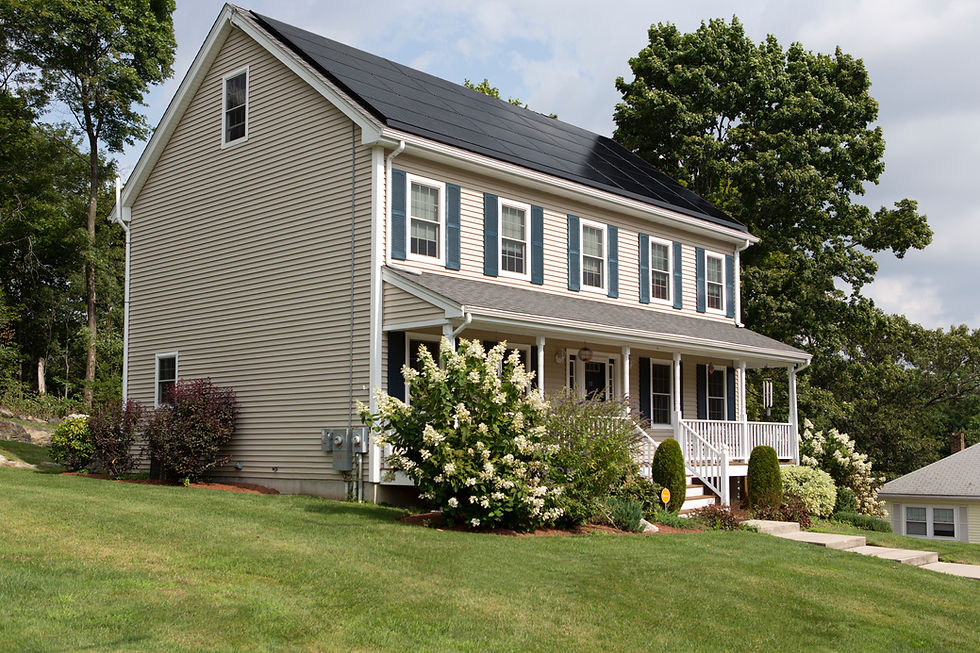
For years, the sun has graced us with its presence, yet only recently have we truly harnessed its boundless potential. Ever wondered if the sun can power your entire home? The answer might surprise you: Yes, it's entirely possible. In fact, many are already going off-grid in the U.S., aiming to sidestep those rising electricity bills.
As the world tilts towards renewable energy, more households are making the solar switch. According to SEIA, by 2022's end, 700,000 homes had installed solar panels—a leap from 4.3% in 2020 to 6% for owner-occupied residences.
Here's a backdrop for you: Earth is drenched in solar energy daily. The energy from just one hour could power our world for a year. And with modern solar tech advancements, running a home entirely on solar isn't just feasible—it's efficient.
Jump to Section:
Factors That Affect How Many Solar Panels You Will Need
Every home tells a different story, and when it comes to solar energy, it's no different. So, what determines the number of panels you'll need?
Geographical Location... Ever noticed how some places are sunnier than others? Your location plays a pivotal role. Living closer to the equator? You're likely to harness more solar energy. But if you're nestled up north, you might need a few more panels to catch those rays.
Roof Orientation and Size - It's not just about having a roof, but how it's angled towards the sun. A south-facing roof in the Northern Hemisphere? That's the sweet spot. And of course, the more space you've got, the more panels you can fit.
Household Energy Consumption... This one's a no-brainer. The more energy-hungry devices you have, the more power you'll need. It's as simple as looking at your monthly electric bill. Higher consumption? You'll need more panels.
Solar Panel Efficiency - Here's the backdrop: Not all panels are created equal. Some are the workhorses of the solar world, squeezing out every bit of energy. Others? Well, they're just getting by. So, when choosing, remember: efficiency is key.
Still feeling a bit lost in the solar maze? Interestingly enough, you're not alone. Unsure about your home's specifics? Dive in and request a free solar assessment now.
How Many Solar Panels Are Needed to Power a Home? Calculations

Have you ever glanced at your electric bill and thought... how many solar panels would it take to cover this? Interestingly enough, it's not as complex as it seems. Let's break down the math for a clearer understanding.
Step-by-Step Guide:
Review Your Monthly Electric Bill: This is your starting point. How much energy are you consuming? The answer's right there, in black and white.
Convert Monthly to Daily: Take that monthly figure and divide by 30 (or 31, depending on the month). This gives you a daily consumption rate. Simple, right?
Determine Peak Sunlight Hours: Now, this varies. If you're in sunny California, you'll have more than, say, rainy Seattle. The United States averages between 3 to 5 peak sunlight hours in most areas. It's all about location.
Calculate the Panels: Here's where it gets a tad technical. Take your daily consumption and divide it by the wattage of a single panel, adjusted for peak sunlight hours. This will give you the number of panels you'd need.
But let's put some flesh on the bones of that with a Real-life Example: Meet Elliot. Living in Arizona, he transitioned his home to solar last year. With a monthly consumption of 900 kWh, he needed around 30 panels of 300 watts each. And guess what? His electric bill's now a fraction of what it used to be.
And here's the kicker: sometimes, producing more energy than you need isn't a bad thing. Benefits of Overproduction? You can sell the excess back to the grid in many areas, turning your home into a mini power station.
So, thinking of making the switch? Dive in and get a free solar quote. Let's start planning your solar journey.
The Financial and Environmental Benefits of Going Solar
Harnessing solar energy isn't just about being kind to Mother Earth. It's also about being kind to your wallet.
Tax Credits and Rebates: Governments worldwide are pushing the green agenda, and guess what? They're literally paying you to join the movement. From federal tax credits to local rebates, the incentives are ripe for the picking. So, if you've been on the fence about solar, now's the time to leap. Why? Because the financial perks are just too good to pass up.
Long-term Savings: Think about your electricity bill. Now, imagine slashing it... month after month, year after year. Over time, those savings add up. And here's the real kicker though: with solar, you're not just saving money. You're also investing in a home upgrade that can boost its value. It's a win-win.
Positive Environmental Impact: Beyond the dollars and cents, there's the undeniable environmental impact. A solar-powered home is a green home. And every panel you install reduces your carbon footprint. But how much, you ask?
Engaging Fact: An average solar-powered home can save tons of CO2 emissions annually. That's like planting a small forest every year. So, while you're counting the savings, you're also counting the countless ways you're helping the planet.
In the end, going solar isn't just a choice... it's a statement. A statement that you're forward-thinking, eco-conscious, and financially savvy. Ready to make the switch? Dive in and let's light up your world, the solar way.
FAQ
Can you run a house completely on solar power?
Absolutely! With the right number of solar panels and an efficient storage system, a house can be powered entirely by solar energy, especially in areas with ample sunlight.
How many solar panels does it take to fully power a house?
Can solar panels work at night?

Comentários